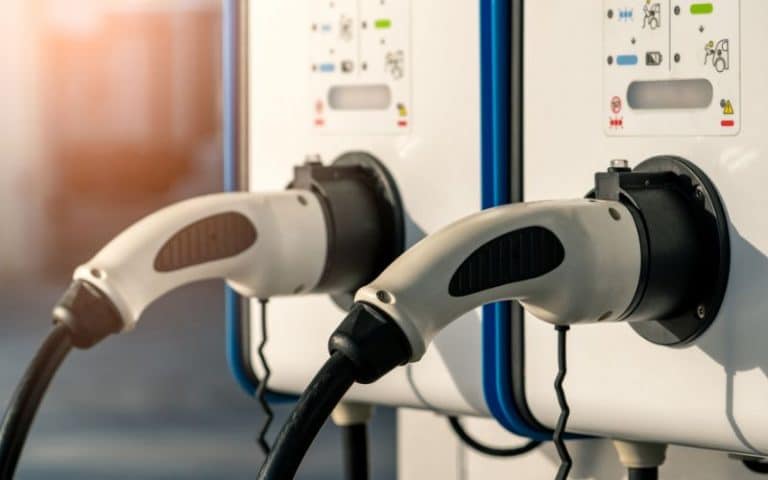Regenerative Braking Temporarily Reduced!
Your Tesla car needs the energy to run. It also expands a lot of energy in the process of running.
The energy used in running the car can be a mechanism for generating other forms of energy.
Slowing down your Tesla consumes a lot of energy. Instead of slowing down, You can now use this energy to power other activities in the vehicle.
In this article, I will explain everything you need about regenerative braking.
The regenerative braking of Tesla temporarily reduces due to significant changes in the conditions of the battery. The regenerative braking may reduce when the battery becomes fully charged or extremely cold.
Why Does My Tesla Say “Regenerative Braking Temporarily Reduced”?

Your Tesla may notify you of reduced regenerative braking whenever the weather is extremely cold or your battery is already full.
You will notice that the regenerative braking feature of your Tesla is limited or temporarily suspended when you drive your car in extremely cold weather.
When driving, your car devices some energy-saving techniques to maximize every energy it expends.
One of these techniques is the conversion of kinetic energy to chemical energy.
Kinetic energy is the energy expended in bringing the car to a halt. This energy is usually at its peak when the car slows down.
Your Tesla slows down whenever you apply the brakes. Applying these brakes consumes a lot of energy which is then eventually wasted.
Instead of these energies dissipating as heat, they convert to electrical energy, which is used to charge the batteries.
In the deceleration process of Tesla, the wheels drive the motor, directing the energy to the batteries.
The battery in the Tesla electric vehicle is a Lithium-ion battery.
This battery is significantly affected by cold temperatures; hence, the regenerative capacity reduces when driving in the cold.
The lithium-ion battery depends on the lead-acid chemistry to perform all its functions.
Cold temperatures below 32 degrees will affect lead acid’s efficiency and usable capacity. In cold weather, the battery resistance increases.
The increased resistance lowers the conversion of kinetic energy into electrical energy.
As a result of the lowered conversion rate, Regenerative Braking reduces.
Another reason your Tesla car would notify you of a reduced Regenerative Braking is the capacity of the batteries.
If your batteries are fully charged, your Tesla car temporarily reduces the regenerative braking.
Regenerative braking is meant to convert kinetic energy into electrical energy.
The batteries are responsible for storing electrical energy. When the batteries are full, they can no longer trap these energies for storage.
When this reduced regenerative brake happens, you don’t have to worry about anything.
Reasons Why My Regenerative Braking Is Limited?
Regenerative braking could be limited for several reasons. Here are some reasons why regenerative braking may be limited in your Tesla car.
- Tire Adhesion
- Cold weather
- Old or damaged batteries
#1. Tire Adhesion
Tires have markings that allow them to stick firmly on the surfaces of the roads they ply.
The adhesion of tires is their innate ability to stick firmly to roads. Some roads may be slippery, and not all tires can run on them.
If the markings on a tire are reduced, the ability to brake when in motion is also reduced.
This resistance is due to the loss of friction between the tires and the ground.
When friction is lost, it becomes difficult to bring the car to a halt. When the markings erode, the regenerative brake function is significantly limited.
The amount of energy converted is based on the amount of energy generated, which is affected by how easily the car is brought to a halt.
Once there is a resistance at that level, the kinetic energy generated is small, and the electrical energy generated is reduced.
#2. Cold Weather
In cold temperatures, the efficiency of the Lithium-ion battery is reduced. The lithium-ion battery is found in all tesla electric vehicle models.
This battery works by chemical reactions of the lead-acid interactions in its cells.
At temperatures below 32 degrees, the lead-acid cells become ineffective and cannot store electrical energy transmitted to them.
Once you can no longer store the electrical energy, the regenerative braking is also reduced.
In cold weather conditions, it is a regular occurrence that the regenerative braking becomes limited or suspended in total.
#3. Full Batteries
Sometimes, the battery may become fully charged and cannot receive further charges.
The electricity transmitted can no longer be accommodated; hence, the wiring automatically sends a signal to reduce the regenerative braking.
Check the batteries when you are notified that your Tesla can no longer convert kinetic energy to electrical energy.
The batteries, when full, do not need further charges anymore.
#4. Old or Damaged Batteries
When your batteries are old or damaged, they can no longer hold charges.
Once a battery fails to hold charges, the regenerative braking will automatically reduce. The batteries have a charging cycle of 3,000 to 5,000 times.
Once you have exceeded this charge circle, the regenerative braking system will no longer work on your battery.
Batteries can be damaged by overheating, overcharging, and shock.
This shock can include crushing force or dropping the battery. Whenever any of these occur, you will immediately notice that the battery may no longer work again.
Aside from the battery being unfunctional, it may also have reduced regenerative braking.
Does Regenerative Braking Work?
In the working principle of electric vehicles, the regenerative braking system works efficiently.
When driving, the vehicle’s kinetic energy converts to electric energy.
Traditionally, when vehicles slow down, most of the energy generated is kinetic energy.
You cannot use this energy because it loses it to the atmosphere as heat.
Instead of dissipating this energy, a system converts the kinetic energy into electrical energy.
Seeing that the regenerative braking system is found in many electric and hybrid cars, you can save money by just slowing down and braking around city centers.
This energy is used to charge the batteries, propel the car, and power other car functions.
It is estimated that by capturing more than half the energy wasted, regenerative braking can save up to 10 to 25 percent of the fuel consumption that it initially uses. Service Electronic Braking System (Beginners Guide)
What Do I Do When My Regenerative Braking Reduces?
There is nothing to do when regenerative braking reduces. That is, there are no controls on your dashboard to increase or reduce the regenerative braking of your Tesla.
You can only take care of the causes and not the amount of electricity generated whenever you are notified.
When driving in cold weather, you can warm your batteries before you begin your journey.
A safe way to warm a lithium-ion battery is by submerging it in mineral oil. If you cannot do the submerging, then continue to drive.
The batteries will get heated up along the way, and the regenerative braking will improve.
You can also consider replacing your worn-out tires with increasing adhesion on the road’s surface.
The table below summarizes steps you can take if you are notified that your tesla car has reduced regenerative braking.
| Reasons for Regenerative Brake Reduction | Solutions |
|---|---|
| Cold weather | Heat batteries |
| Damaged batteries | Change batteries |
| Worn out batteries | Change batteries |
| Reduced tire adhesion | Change tires |
Best Regenerative Braking Settings for the Tesla Model 3
Conclusion
Regenerative braking reduces temporarily. You can observe this reduction when driving in cold temperatures or when your battery is fully charged.
It’s crucial to find the source of the problem when the regenerative braking system fails. Solving the problem improves your regenerative brakes.






